Cataracts are a common cause of blurry vision for older adults. They form when proteins in your eye’s natural lens clump together.
The clumping together of the proteins causes a clouding of your eye’s natural lens, which slowly impairs vision. Cataracts begin to form when you’re in your forties and typically cause gradual vision changes.
Knowing the signs of cataracts is vital to preserving your vision. Keep reading to learn seven signs you may have cataracts!
1. Blurry Vision
A key symptom of cataracts is blurry vision. Your eyesight may be foggy or cloudy, and you may notice difficulty reading fine print.
Initially, cataracts cause minimal vision changes. However, as your cataracts worsen and less light reaches the retina, the blurriness can make performing routine tasks more difficult.
2. Colors Appearing Faded
Are colors around you looking faded and less vivid? Do they appear more dull than usual?
Cloudiness due to cataracts causes colors to seem subdued. Your vision will also tend to be less sharp.
3. Frequent Prescription Changes
It’s normal for vision changes to occur as you get older. However, you may find that you need to have your glasses prescription updated regularly.
If you notice that your vision has gradually worsened and you have to update your glasses prescription frequently, you may have cataracts.
4. Double Vision
Seeing two or more images is another warning sign of cataracts. Sometimes, cataracts can cause shadowing or ghosting of images.
These images may seem to overlap with each other, which can be confusing and disorienting. Double vision can make it harder to walk, read, or balance.
Double vision is not always a sign of cataracts and can be due to a different problem with your vision. If you are experiencing double vision, it is important to see your eye doctor to have your eyes evaluated.
5. Difficulty Seeing in Dim Lighting
When cataracts form, the clouding of the lens makes it difficult for the light that is entering your eye to reach the retina. In conditions where there is minimal lighting, you may notice difficulty seeing.
These conditions can occur when you maneuver around your house at night or early in the morning. Difficulty seeing in dim lighting can make it challenging to do the daily tasks you are accustomed to.
6. Difficulty Reading Small Print
Have you noticed difficulty reading fine prints or looking at close-up objects, even with prescription glasses? As your cataract progresses, your eye’s lens becomes cloudy and hardened.
When the lens is unable to be flexible, it has a hard time focusing for you to see at all distances. Often, one of the first signs of cataracts is difficulty reading or performing certain tasks at near.
7. Trouble with Nighttime Driving
Cataracts block light from entering your eye, which affects your night vision. If you’re struggling with headlights from oncoming cars and reading road signs at night, you might have cataracts.
Other signs of cataracts are seeing halos and starbursts around light sources. You may experience troubling glare from oncoming headlights when driving at night.
Poor vision, halos, and glares can put you and other road users at risk. For this reason, it’s essential to have your eyes checked for cataracts.
Regular eye exams are essential to preserving your vision and the health of your eyes, particularly as you get older. Your eye doctor can monitor your cataracts during routine eye exams and will notify you when it is time for cataract surgery.
Are you experiencing any of these symptoms? Schedule a cataract screening at Colorado Eye Consultants in Littleton, CO, today!

